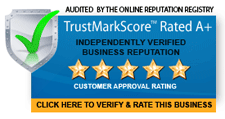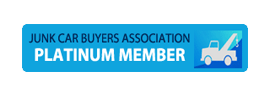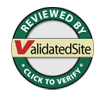1. Introduction — Why this guide and what to expect

What this guide will do for you
For step-by-step help choosing the best selling route, pricing accurately, preparing the vehicle, creating listings that convert, handling test drives and inspections safely, finishing DMV paperwork, and avoiding common scams, read the ultimate guide to selling your car online quickly and safely.
Transactional focus: Every section gives actionable steps so you can decide, list, and close the sale quickly while keeping the most money in your pocket and minimizing risk.
“We buy everything from lightly used cars to non-running junk vehicles, offering free towing and transparent cash offers—our goal is to make selling simple and fair for Chicago sellers.” — Owner, Junk Car Chicago
2. Decide which selling route is best for you (private sale vs trade-in vs dealer vs instant buyer vs consignment); for a step-by-step walkthrough, see the ultimate guide to selling your car online quickly and safely.
Pros and cons summary
Every route balances price, time, and effort differently:
- Private sale: Highest net proceeds in most cases but requires time, screening buyers, and handling paperwork.
- Trade-in: Easiest—dealer handles paperwork and often gives same-day credit toward a new car; usually pays less than private sale.
- Dealer buy: Fast and simple; dealers may pay more than trade-in if they want your model but still usually less than a private-party sale.
- Instant buyers (Carvana, Vroom, local buyers): Very fast, often same-day offers and pickup—prices can be discounted for convenience.
- Consignment: Good for higher-end or collectible cars—you may get a premium but pay commission and wait longer.
When to choose each route — and for local recommendations on reputable sites to sell a car to a person in Dallas, see what is reliable website to.
Choose dealer or instant buyer if your car has very high mileage, needs repairs, or you need a quick turnaround. Opt for a private sale or consignment when you can wait for top dollar and want full control over pricing. Use trade-in when convenience or a tax advantage on a new purchase matters more than small differences in price.
Considerations in the current market
Market dynamics in recent years have shifted how fast and how much buyers pay. Used EV demand varies by region due to charging infrastructure and resale battery concerns. Localized supply swings and seasonal demand (e.g., convertibles in summer) can tilt the optimal route—check local comps before deciding.
3. Accurately price your vehicle (tools + market checks)
Use multiple valuation tools
Cross-check several trusted sources: Kelley Blue Book (KBB), Edmunds, NADA Guides, and professional wholesale services like Black Book. These give baseline retail and trade-in values, but don’t stop there.
Check live market comps
Search recent sold listings and active prices on CarGurus, Cars.com, AutoTrader, eBay Motors, and local Facebook Marketplace/Craigslist ads. Look for vehicles with similar mileage, condition, trim, and optional equipment in your ZIP code to see what buyers are actually paying.
Adjust for real-world factors
Factor in condition, mechanical issues, maintenance history, and seasonality. For EVs and hybrids, adjust price based on reported battery state-of-health and usable range—battery replacement or diminished range can reduce private-party value substantially.
4. Gather documentation and complete pre-sale checks
Essential documents to have ready
Collect the title (or lien release), maintenance records, owner’s manual, and any emissions or inspection certificates required in your state. A clean, signed title speeds closing; if the title is lost, start your state DMV replacement process early.
Vehicle history and recalls
Run a vehicle history report via CARFAX or AutoCheck and perform a VIN recall check at the NHTSA recall lookup or the manufacturer site. Disclose open recalls and document completed repairs—transparency reduces later disputes.
Financed or leased vehicles
If you still owe money, contact your lender for the exact payoff amount and instructions. For leases, get the buyout figure and confirm early termination fees and transfer rules with the lessor before advertising the vehicle for sale.
5. Prepare the car to maximize value (cleaning, minor repairs, and detailing)

DIY vs professional detailing
A thorough clean greatly improves appeal. Interior shampooing, odor removal, a professional exterior wash and moderate paint correction can increase buyer confidence. Professional detailing makes listings look premium and often pays for itself in faster sale and better offers.
High-ROI small repairs
Handle inexpensive fixes that buyers notice: replace burnt bulbs, fix minor leaks, change wipers, top off fluids, and replace cabin/engine air filters. If a check-engine light stems from a simple fault (e.g., loose gas cap), resolve it and keep the receipt.
Document repairs and preserve transparency
Keep receipts and photograph before-and-after work. If you perform major repairs, offer inspection reports to back up your asking price—buyers pay more for documented reliability.
6. EV & hybrid-specific preparation and disclosures
Check battery health and range
Get a recent state-of-health (SOH) or range estimate via dealer diagnostics or third-party OBD-II EV tools. For many buyers, usable battery capacity is the single biggest determinant of private-party value.
Disclose software, warranties and updates
List transferable warranties, remaining battery warranty terms, and any software locks or subscriptions tied to the vehicle. Note if over-the-air (OTA) updates are current or pending—some buyers expect the latest software for safety or convenience features.
Incentives and credits
Let buyers know if the vehicle might qualify for used clean vehicle credits or state incentives where applicable—these can increase buyer interest, even if they don’t directly change your sale proceeds.
7. Create an effective listing: title, description, pricing strategy and legal disclosures
Crafting the title and description
Write a clear listing title with year, make, model, trim, and condition (e.g., “2017 Toyota Camry LE — Clean Title, 95k mi”). In the description, include VIN, mileage, maintenance highlights, accident history, and a truthful reason for selling. Honesty reduces time wasted on avoidable objections.
Pricing and negotiation strategy
List slightly above your target private-sale price to allow negotiation, or state a firm price for instant-buyer approaches. If selling AS-IS, call that out boldly. Consider a short refundable deposit to hold the vehicle during final paperwork.
Legal disclosures
Follow state rules for salvaged/rebranded titles, odometer statements, and recall disclosures. Many states require a bill of sale with VIN and final price—have these templates ready to avoid last-minute trips to the DMV.
8. Photography and visuals that sell (image checklist and staging tips)
Image checklist
A strong listing includes 10–20 high-quality photos: front 3/4, rear 3/4, full interior shots, trunk/cargo area, engine bay, odometer close-up, VIN plate, tire tread, and any damage. For EVs, include charger and adapter photos.
Staging and shooting tips
Photograph in daylight against a clean background, remove personal items, and use a steady camera or tripod. Clean the car thoroughly beforehand and capture both wide shots and close-ups of features and imperfections.
Optional media
Add a short walkaround video, a 360° interior scan, and upload a PDF of maintenance history or a recent inspection to reassure buyers and reduce back-and-forth questions.
9. Where to list: recommended online platforms and local options (2025 landscape)
Top online platforms
Use a mix of listing sites for visibility: Cars.com, CarGurus, AutoTrader, eBay Motors, Facebook/Meta Marketplace, and Craigslist. For instant offers, check national services like CarMax, Carvana, and Vroom, plus local dealer offers and salvage buyers for non-running vehicles.
Consignment and specialist options
If you have a higher-end or collectible vehicle, consider dealer consignment, specialist consignment lots, or vetted online consignment platforms. They charge commissions but often reach buyers willing to pay premiums.
Cross-listing best practices
Cross-list to multiple platforms but manage inquiries centrally and mark sold across sites promptly. Use posting managers or syndication tools when available to save time.
10. Handling inquiries, test drives and inspections safely
Screening and meeting buyers
Pre-screen buyers by phone or message—confirm their full name and a reasonable time to meet. Arrange meetings during daylight in public places (bank parking lots or near police stations) or at your home with a friend present.
Test drive protocol
Verify the buyer’s driver’s license and insurance, limit keys during the test drive, and accompany them. Choose a route that shows the car but avoids risky roads. For long test drives or high-value cars, ask to hold a copy of the buyer’s ID and leave a key with you.
Inspections and mechanic checks
Offer a pre-purchase inspection or suggest a trusted local mechanic or mobile inspection provider (e.g., Lemon Squad or an ASE-certified shop). For remote buyers, require inspection before finalizing and use escrow for funds until the inspection is complete.
11. Negotiation tips and how to handle offers
Set a bottom line
Know your lowest acceptable price before negotiating. Use recent maintenance records, inspection reports, and market comps to justify your asking price. Start slightly above your target to leave room to meet in the middle.
Safe payment practices
Prefer bank transfers or verified cleared funds. If accepting a cashier’s check, verify it at the issuing bank in person. Avoid releasing title or keys until funds have fully cleared in your account.
Handling deposits
If you accept a deposit to hold the car, use a written receipt that specifies refund conditions and timeline. Keep records of all communications and receipts to prevent disputes.
12. Completing the sale: title transfer, paperwork and DMV steps
Documents you must provide
Typical paperwork includes a signed title, bill of sale (with VIN and sale price), odometer disclosure (where required), and release of liability/notice of sale filed with your DMV. Keep copies for your records.
Dealing with liens and electronic titles
If there’s a lien, obtain a payoff letter from the lender and arrange for lien release. Some lenders facilitate electronic title transfers directly to the buyer; coordinate timing so you don’t surrender the vehicle before the lien is cleared.
Post-sale administrative steps
Cancel or transfer plates per state rules, cancel insurance after the sale is finalized, and file a release of liability with your DMV to limit future obligations. Retain copies of all signed documents for tax and legal records.
13. Taxes, reporting and post-sale steps
Tax implications for sellers
Most private vehicle sales are not taxable as income because you’re selling a personal asset at a loss or at value. Keep your bill of sale and records in case of questions. If you somehow sold at a gain (rare for personal vehicles), consult a tax professional.
State reporting requirements
File state-required release of liability forms to avoid tickets, tolls, or legal issues after sale. Some states require immediate notice while others allow a short reporting window—check your DMV procedures.
Records to keep
Keep copies of the bill of sale, signed title transfer, lien release (if any), and communication records for several years in case of audits or disputes.
14. EV/hybrid buyer expectations and transfer logistics
Hardware and subscriptions to transfer
Include charging cables, adapters, dongles, and any vehicle-to-home hardware. Document whether telematics subscriptions, remote start services, or subscription-based features transfer with sale—some require account transfer or dealer reset.
Battery and charging history
Provide recent charging records or telematics printouts if available, and disclose any battery replacements or warranty repairs. Buyers often request recent fast-charge sessions and average range to evaluate long-term value.
Fleet or commercial buyer requirements
If selling to a dealer or fleet buyer, be prepared to supply telemetry and service logs. These buyers rely on detailed histories for remarketing or fleet integration.
15. Common scams and how to avoid them
Watch for overpayment and fake escrow scams
Fraudsters often overpay with fake cashier’s checks or fake escrow confirmations and ask for refunds. Always verify funds with your bank and confirm escrow services directly through established platforms (do not click links in texts or emails).
VIN cloning and identity risks
Be careful with buyers who request to ship the car overseas or ask you to sign title before payment clears. Verify buyer identity and meet at a bank when possible. If something feels rushed or complicated, step back and verify independently.
Platform-specific cautions
Keep initial communications on the listing platform when possible and follow their payment guidance. Moving the conversation off-platform early increases fraud risk.
16. Comparing selling channels — quick decision matrix
Net proceeds
Private sale and consignment generally yield the highest proceeds. Trade-ins and instant buyers offer lower net prices but provide speed and convenience. Use market checks to quantify expected differences for your specific model.
Time to sell
Instant buyer: hours–days. Trade-in: same day at purchase. Private sale: days–weeks depending on demand. Consignment: can range from weeks to months but may capture premium buyers.
Effort and risk
Private sale requires the most effort—photography, listing management, buyer screening—while dealers and instant buyers handle most logistics. Risk (fraud or unpaid funds) is higher in unvetted remote deals; prioritize escrow or bank verification for long-distance sales.
17. Recommended tools and services (2025)
Valuation and listing tools
Use Kelley Blue Book, Edmunds, CarGurus, Cars.com, and AutoTrader to value and list. For auctions, consider eBay Motors.
History and inspection services
Get vehicle history from CARFAX or AutoCheck, and use mobile inspection services (e.g., Lemon Squad) or local ASE-certified shops for trusted pre-sale inspections. For EV specifics, request dealer diagnostic prints when possible.
Secure payment and transfer
Prefer bank wire/ACH or verified transfers. For smaller, local sales Zelle can work, but only with verified accounts. Consider escrow services for long-distance transactions and verify certified checks in person at the issuing bank.
18. Sample templates and checklists
Bill of sale (concise template)
Bill of Sale — Seller: [Name, Address]. Buyer: [Name, Address]. Vehicle: [Year, Make, Model, VIN]. Sale Price: $[Amount]. Odometer: [Reading]. Date: [MM/DD/YYYY]. Signatures: Seller __________________ Buyer __________________
Test-drive waiver example
Test-Drive Agreement — I, the undersigned, acknowledge that I will drive the vehicle at my own risk and present a valid driver’s license and proof of insurance. Buyer Name: ________ Signature: ________ Date: ________
Seller’s closing checklist
Verify funds cleared, sign title in presence of buyer or bank if required, complete bill of sale, file release of liability with DMV, cancel insurance, and retain copies of all documents.
19. Quick reference: timeline and minimum steps to sell in one weekend
Fast weekend plan
Friday: gather title and maintenance records, run valuation tools, decide route. Saturday: clean, photograph, and create listings. Sunday: screen buyers, show vehicle, and allow test drives. Monday: finalize sale, verify cleared funds, sign paperwork, and file DMV release.
Rapid inspection and quote options
Use mobile inspectors and instant online quote tools for a quick second opinion. Many instant buyers provide online offers within hours and will schedule pickup the next business day.
20. FAQs and troubleshooting
What if I lost the title?
Begin a replacement title request with your state DMV immediately. Some buyers will accept a notarized bill of sale and a DMV receipt showing a pending title; others will wait until you produce the replacement title.
How do buyers finance purchases?
Buyers arrange financing through banks, credit unions, or dealer financing when trading in. If a buyer claims a lender will pay directly, verify the lender’s details and confirm funds have cleared before transferring title.
If I get no inquiries, what should I change?
Improve photos, lower price slightly, rewrite the headline to highlight maintenance history or unique features, and cross-list to additional platforms. Consider a short professional detail to refresh interest.
21. Final checklist & next steps
Must-dos before you sell
Have the title or lien-release plan, gather maintenance records, clean and photograph the car, set a firm lowest-acceptable price, and choose a secure payment method. File a release of liability after sale and cancel insurance.
Ongoing tips
Run local comps weekly until sold, consider consignment if time is not short and you want top-dollar, and prioritize safety by meeting buyers in public places and verifying funds at a bank.
For sellers in the Chicago area with non-running or salvage vehicles, services like Junk Car Chicago provide free towing, quick cash offers, and transparent transactions that simplify the process when a private sale or trade-in isn’t practical.
Ready to turn your unwanted vehicle into quick cash? Kelly Car Buyer, Inc makes it easy to sell almost any type of vehicle—including cars, junk cars, trucks, semi-tractors, and trailers—regardless of condition. Don’t wait to get the best offer—click now to discover how simple and hassle-free selling your vehicle can be, and enjoy fast, top-dollar payouts today!








